Most people know nitroglycerin as a heart medication - the little pill that saves lives during a heart attack. But few realize it started as one of the most powerful explosives ever made, and its military use changed warfare forever. In the 1860s, a Swedish chemist named Alfred Nobel didn’t set out to invent medicine. He was trying to make a safer way to blow up rock for tunnels and railways. What he created ended up reshaping battlefields, then hospitals - and the same molecule now sits in both a soldier’s pack and a patient’s pocket.
The Birth of a Dangerous Compound
Nitroglycerin was first synthesized in 1847 by Italian chemist Ascanio Sobrero. He called it "oleum picrum" - oily and bitter - and warned everyone to stay away. One drop could cause violent headaches, pounding hearts, and near-death symptoms. It was unstable. Shake it. Drop it. Heat it. And it exploded. Sobrero refused to patent it, calling it too dangerous.
But the military saw potential. Before nitroglycerin, armies relied on black powder - slow, smoky, and weak. It took tons of it to blast through fortifications. Nitroglycerin was 10 times more powerful. A single pound could demolish a stone wall that needed 10 pounds of black powder. By the 1860s, armies across Europe were testing it in artillery shells and mines. The Franco-Prussian War (1870-1871) saw its first large-scale battlefield use. Soldiers carried it in glass vials, wrapped in cloth, praying it wouldn’t shake loose.
Nobel’s Breakthrough: From Chaos to Control
The real turning point came when Alfred Nobel cracked the code. He didn’t make nitroglycerin safer - he made it controllable. In 1867, he mixed it with diatomaceous earth - a soft, porous rock made of fossilized algae. The result? Dynamite. Stable. Safe to handle. Could be drilled into rock and detonated with a fuse.
Within five years, dynamite was in every major army’s arsenal. The British used it to blast tunnels under enemy lines in the Crimean War. The U.S. Army deployed it during the Spanish-American War to clear obstacles. By World War I, dynamite was standard issue for sappers - specialized troops trained to blow up bridges, railroads, and bunkers. The Germans even developed nitroglycerin-based propellants for artillery shells, increasing range and impact.
But the cost was high. Soldiers often died not from enemy fire, but from accidental detonations. Transporting nitroglycerin meant risking entire trains. In 1916, a British munitions factory in Scotland exploded, killing 134 workers - all handling the same liquid that now sits in your medicine cabinet.
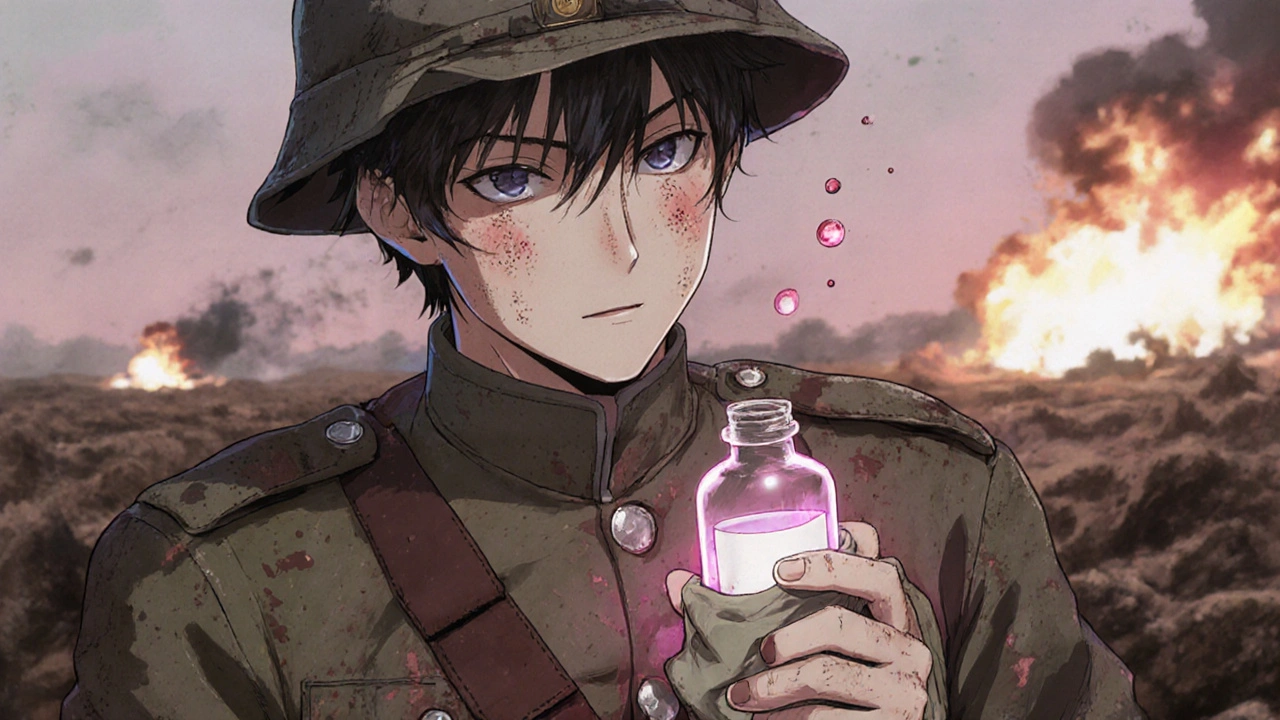
The Medical Miracle: How a Bomb Became a Lifesaver
Here’s the twist: the same soldiers who survived nitroglycerin explosions started reporting something strange. After handling it, their crushing chest pain - what we now call angina - would vanish. They’d get dizzy, their heads would pound, but the tightness in their chests? Gone.
Doctors noticed. By the 1870s, Dr. William Murrell in London began testing tiny doses of nitroglycerin on heart patients. He found it relaxed blood vessels. It didn’t cure heart disease. But it made the heart work easier. Blood flowed better. Pain faded. Within a decade, nitroglycerin tablets were being prescribed - not as poison, but as medicine.
By the 1950s, the military had stopped using raw nitroglycerin. Dynamite was replaced by TNT, RDX, and C-4 - more stable, more powerful. But the medical use? It only grew. Today, nitroglycerin spray and tablets are standard in ambulances, ERs, and military field medics’ kits. It’s the fastest-acting drug for heart attacks. One spray under the tongue. 30 seconds. Relief.
How It Works: The Same Mechanism, Two Purposes
The science is simple. Nitroglycerin breaks down in the body into nitric oxide. That molecule tells blood vessels to relax. In the heart, that means less strain, better oxygen flow. In explosives, nitric oxide is part of the rapid chemical chain reaction that creates a shockwave - millions of times faster, and far more violent.
It’s the same molecule. Same chemical formula: C3H5N3O9. But dosage and delivery make all the difference. A milligram in a pill? Life-saving. A gram in a bomb? Total destruction.
Modern military applications still exist, but not in pure form. Nitroglycerin is now a component in double-base propellants - mixed with nitrocellulose to fuel rockets and missiles. The U.S. Army’s M777 howitzer uses propellants containing nitroglycerin derivatives. It’s not the explosive itself anymore. It’s a fuel. More efficient. More predictable.
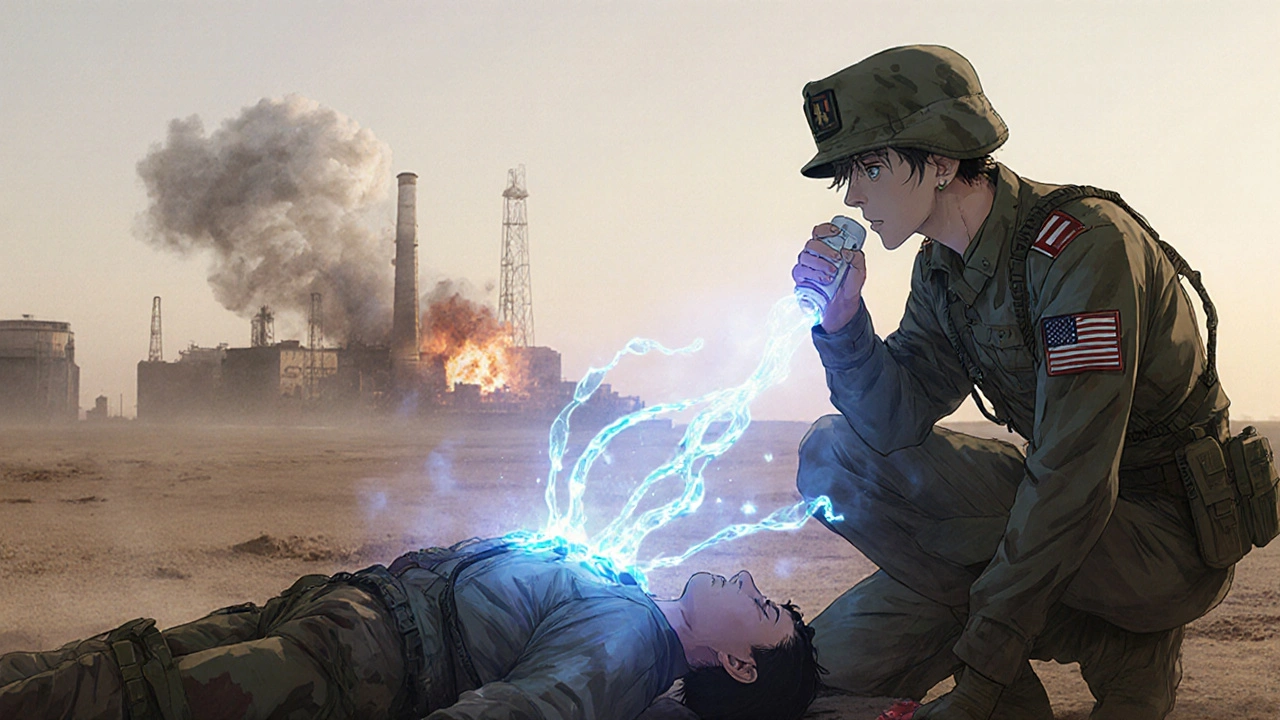
Why It Still Matters Today
Nitroglycerin’s legacy isn’t just history. It’s alive in two worlds. In the field, medics carry nitroglycerin spray in their trauma kits - just like they carry tourniquets and epinephrine. In combat zones, where every second counts, it’s one of the few drugs that works instantly. A soldier with chest pain? One spray. He might live to see another mission.
And in the lab, researchers still study nitroglycerin’s effects. New formulations are being tested for long-term heart failure. Some trials combine it with antioxidants to reduce tolerance - a known issue where patients need higher doses over time. Military medics have already adapted: they’re trained to rotate nitroglycerin with other vasodilators to keep effectiveness high.
The connection between war and medicine runs deep here. Without battlefield accidents and soldier testimonies, nitroglycerin might have stayed locked in a lab as a dangerous curiosity. Instead, it became one of the most widely used heart drugs in the world.
What’s Next?
Modern explosives have moved on. C-4, HMX, and plastic bonded explosives are the new standard. But nitroglycerin still holds a place - not as a standalone explosive, but as a key ingredient in advanced propellants. Its chemical properties are hard to replicate. It burns cleanly. It’s energy-dense. And it’s still cheaper than many alternatives.
Medically, the focus is on delivery. Patches, gels, and even inhalers are being tested. The goal? Longer-lasting relief without the headaches that come with repeated doses. One study from 2023 showed a new transdermal patch reduced angina episodes by 68% over 12 weeks - better than older tablets.
Nitroglycerin reminds us that science doesn’t follow clean lines. The same molecule that kills can heal. The same invention that changed warfare now saves lives on the home front. It’s a rare example of a chemical that crossed from destruction to salvation - and kept both roles alive.
Is nitroglycerin still used in modern military explosives?
Yes, but not as pure nitroglycerin. Modern militaries use it as a component in double-base propellants, mixed with nitrocellulose. It helps fuel rockets, artillery shells, and missiles because of its high energy output and stable combustion. Pure nitroglycerin is too unstable for direct use today.
Why does nitroglycerin relieve chest pain?
Nitroglycerin breaks down into nitric oxide, which signals blood vessels to relax. This widens arteries, lowers blood pressure, and reduces the heart’s workload. Less strain means less oxygen demand - so chest pain from angina fades quickly. It doesn’t fix the underlying blockage, but it gives the heart breathing room.
Can soldiers use nitroglycerin for heart attacks in the field?
Yes. Military medics carry nitroglycerin spray in trauma kits. If a soldier shows signs of a heart attack - chest pressure, sweating, shortness of breath - medics administer one spray under the tongue immediately. It’s one of the fastest ways to stabilize them before evacuation. Many combat medics report it’s saved lives during ambushes and vehicle accidents.
Is nitroglycerin addictive?
No, nitroglycerin is not addictive. But the body can develop tolerance if used too often. That’s why doctors recommend nitroglycerin only when needed - not daily. Patches are often designed with "nitrate-free" periods to reset sensitivity. This isn’t dependence like with opioids. It’s a physiological adaptation.
What are the side effects of nitroglycerin?
Common side effects include headaches, dizziness, flushing, and low blood pressure. These happen because the drug opens blood vessels everywhere - not just in the heart. Soldiers and patients often report throbbing headaches after use. These usually fade with repeated doses. Severe drops in blood pressure can cause fainting, so it’s never given to someone with very low BP or who’s taken erectile dysfunction drugs like Viagra.
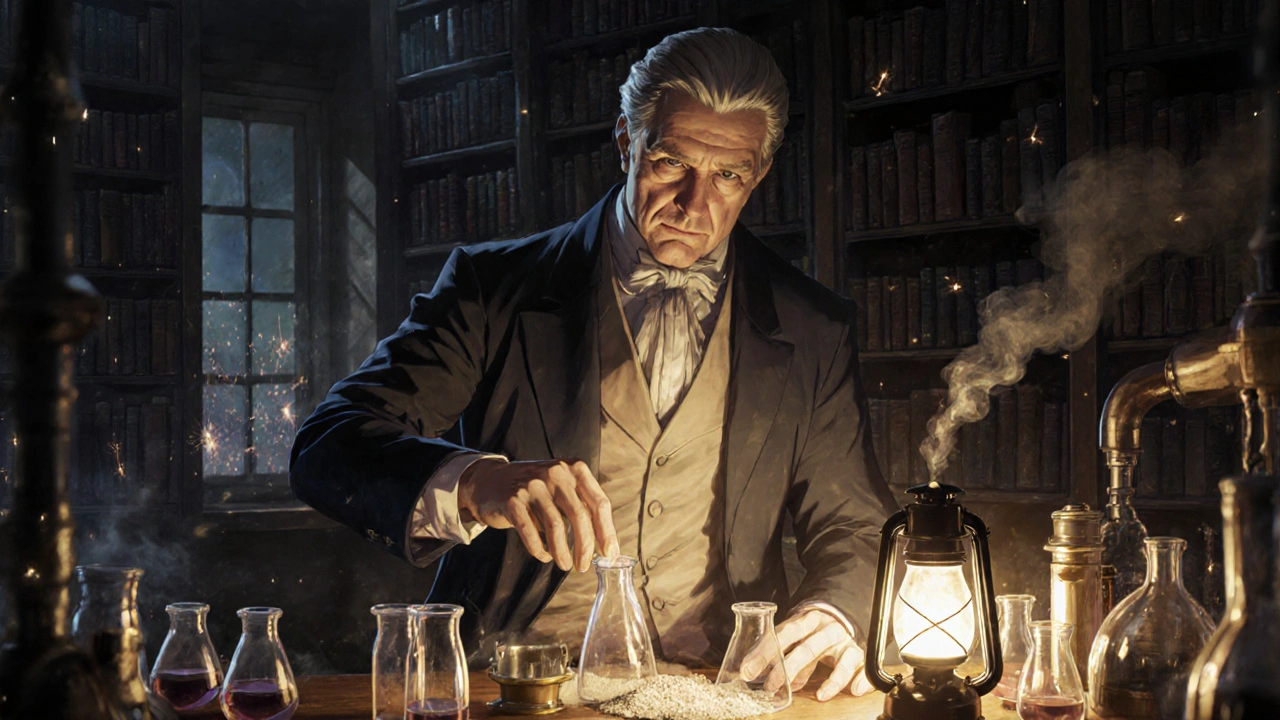

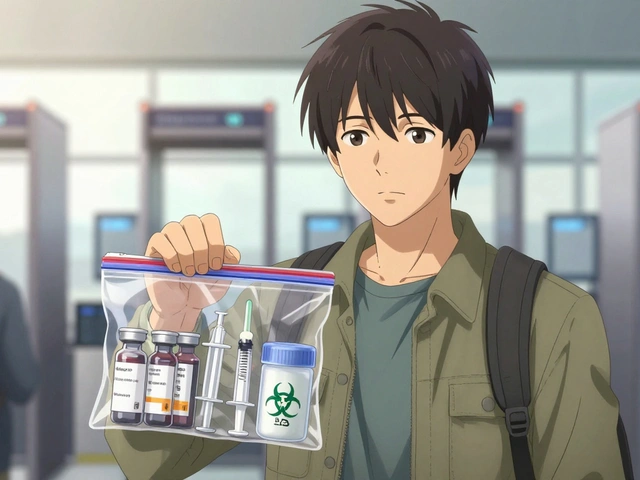



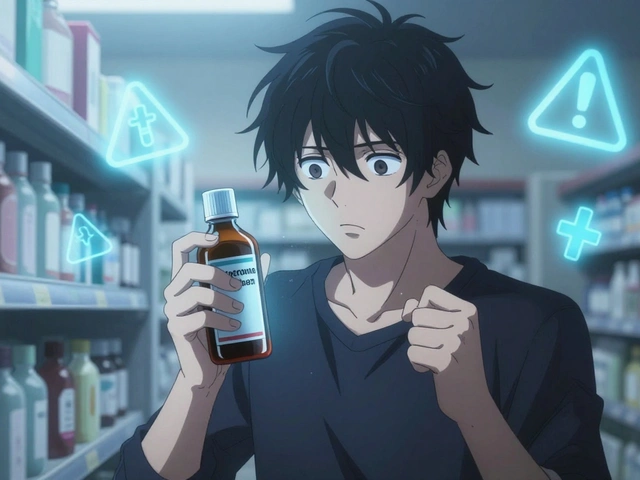

Josh Arce
Nitroglycerin in bombs? Yeah right. That’s just government propaganda to make us think chemistry is dangerous. Real explosives are all synthetic now. This whole story feels like a textbook lie wrapped in poetic fluff.
Nawal Albakri
they told us nitroglycerin was a heart pill but what if its actually a mind control agent??? the military mixed it with water in the 70s and gave it to soldiers to make them docile… i read it on a forum in serbia. the headaches? thats the brain syncing to the signal. dont trust pills. dont trust wars. dont trust science. 🤯
Eric Donald
This is one of those rare cases where science doesn’t follow a moral arc-it just follows molecules. The same compound that obliterates concrete also keeps a man alive long enough to hold his child’s hand. There’s no irony here. Just physics. And maybe, just maybe, that’s more beautiful than any myth.
Robert Andersen
so like… it’s the same thing? one drop kills you, one drop saves you? wild. reminds me of how salt can preserve food or kill you if you eat a whole shaker. nature don’t care about our labels. we just label things so we feel smart
Alexander Ståhlberg
Let me be clear: the fact that a substance capable of reducing a stone wall to dust is also used to keep a man from dying in his driveway is not a coincidence. It is a mirror. The military didn’t just weaponize chemistry-they weaponized vulnerability. The soldier who survives an explosion and then gets a nitroglycerin tablet isn’t being saved. He’s being reminded that the system that made him a killer also needs him alive enough to pay taxes. The duality isn’t poetic. It’s institutional.
Khaled El-Sawaf
While the narrative presented is emotionally compelling, it lacks rigorous engagement with the historical record. The claim that nitroglycerin was widely used in the Franco-Prussian War is demonstrably inaccurate-its deployment was limited to experimental units. Furthermore, the assertion that soldiers’ angina relief led directly to medical adoption ignores the decades of clinical trials conducted by European physicians, notably in Vienna and Edinburgh, prior to Murrell’s work. The romanticization of serendipity in science is a dangerous fallacy that undermines evidence-based historiography.
Jackie R
So we’re glorifying a chemical that killed hundreds of factory workers just so rich guys can live longer? Classic. The military didn’t want to save lives-they wanted to keep soldiers functional so they could keep blowing things up. This isn’t a miracle. It’s exploitation dressed up as progress.
Brenda Flores
This is so beautiful. 🥹 I had no idea nitroglycerin had this dual life. My grandpa was a bomb tech in Korea-he always said the best thing about his job was that he never had to use the stuff. But he kept a little bottle of the medicine in his pocket his whole life. Said it reminded him that even the worst things can be turned into something gentle. Thank you for this.
Eli Grinvald
❤️ this made me cry. i work in an er and we use the spray all the time. last week a guy came in after a car crash-no trauma, just chest pain. one spray and he started crying because he could breathe again. i wish everyone knew how fragile life is. and how powerful a little molecule can be.
robert maisha
Chemistry does not care for human narratives yet humans insist on weaving them into every reaction. The molecule C3H5N3O9 exists without morality. Its utility in detonation or vasodilation is a function of concentration and context not intention. The myth of duality is a projection. The truth is simpler: the same force that breaks can also bend if the system is calibrated correctly. We are not the authors of meaning. We are the interpreters.
Megan Oftedal
Wait so… if nitroglycerin is in both bombs and heart pills, does that mean if I take my grandma’s medicine, I’m basically carrying a bomb in my pocket? 😅 I’m just asking because I’m scared to let her take it now. Should I be? Also, can I sell this as a TikTok trend? ‘Nitro or Not?’
Musa Aminu
USA invented this? No. We just stole it and made it bigger. Nigeria had better explosives in 1850. We just didn’t need to blow up mountains-we had enough people to dig with hands. And now you want to make this some American hero story? The real hero was the African laborer who carried those vials in the Congo while the white men wrote textbooks. This isn’t science. It’s colonialism with a pharmacy label.